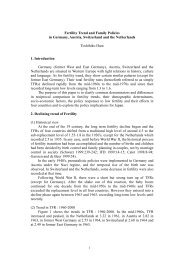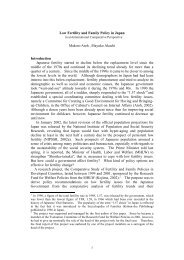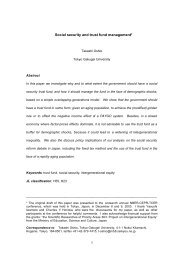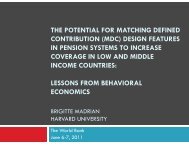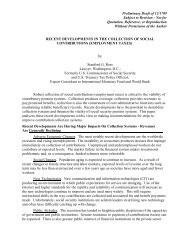Intergenerational Voter Preference Survey - Preliminary Results ...
Intergenerational Voter Preference Survey - Preliminary Results ...
Intergenerational Voter Preference Survey - Preliminary Results ...
Create successful ePaper yourself
Turn your PDF publications into a flip-book with our unique Google optimized e-Paper software.
is that we over-sampled from people with younger children and they tend to be younger.Table 2 gives age distribution of three groups of respondents. Parents of youngerchildren are themselves younger than parents of older children. Respondents withoutchildren are younger (average distribution) than those who have older children. Thissuggests the group includes those who intend to have children in the future. We usethe term “No minors” as those with no young children and those with only adultchildren (over 20 years of age).At least oneAll childrenNo minorschild underover 20 yearsNo children(over 20 +19 years oldoldNo children)20-29 43 0 121 12130-39 367 0 183 18340-49 480 29 142 17150-59 131 215 54 26960-69 5 219 14 23370-79 1 45 1 4680-89 0 6 0 6Over 90 0 0 0 0Average 41.8 59.9 37.7 48.9Table 2 :Age DistributionDemeny EligibilitySince the main purpose of this research is to understand how Demeny voting ifinstituted for the proportional representation (PR) vote would change preferences andbehavior, define “Demeny Eligible” as respondents who have at least one child under 19years of age (19 and under) and would therefore be eligible for an extra vote (for eachchild 19 and under). The group “No Minors” in Table 2 are those voters who at notDemeny Eligible.4



